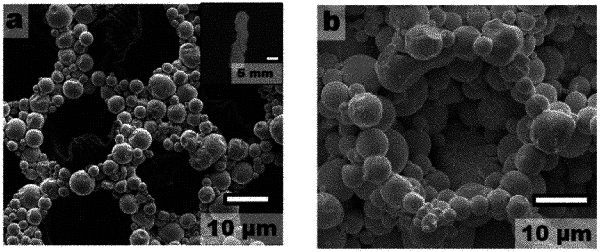| CPC B29C 33/3842 (2013.01) [C22C 28/00 (2013.01); B29K 2083/00 (2013.01); B29K 2905/00 (2013.01)] | 18 Claims |

|
1. A method of forming a metallic inverse surface replica, the method comprising:
applying a solution, the solution comprising suspended undercooled liquid metallic particles and one or more organic solvents and/or organic liquids, to an irregular surface of a substrate comprising an organic substrate, a biological substrate, a bone, or a combination thereof, the particles comprising
a solid shell comprising a metal oxide, and
a liquid metallic core that is below the melting point of the liquid metallic core, and
drying the applied solution on the irregular surface, to form a particle-coated substrate;
rupturing the solid shells of the particles of the particle-coated substrate, wherein the rupturing forms a metallic-coated substrate, the metallic-coated substrate comprising a metallic coating on the irregular surface of the substrate, the metallic coating comprising a solidified metal and/or metal alloy and solid metal oxide shells; and
removing the metallic coating comprising the solidified metal and/or metal alloy from the metallic-coated substrate to form the metallic inverse surface replica.
|